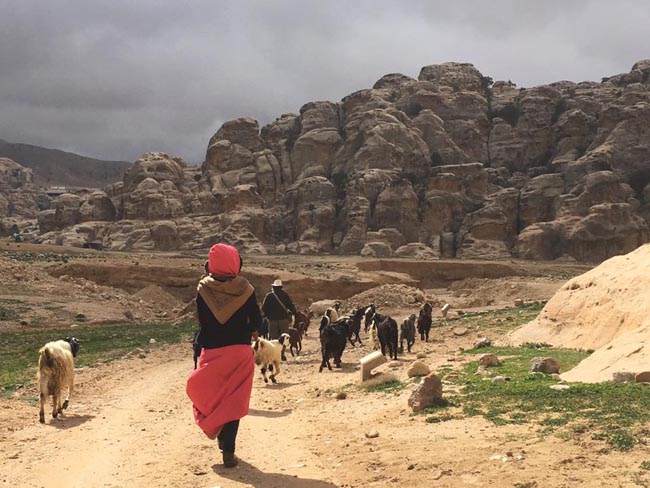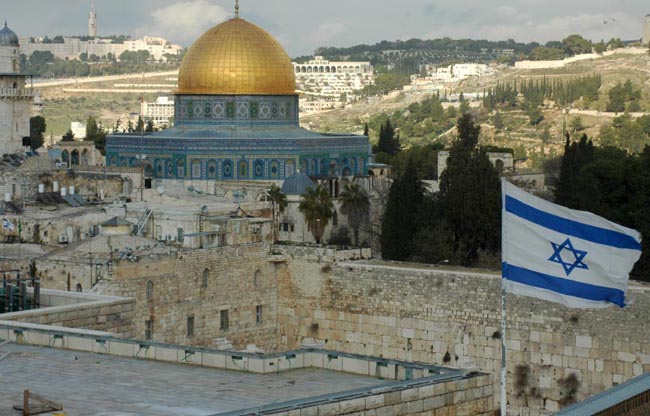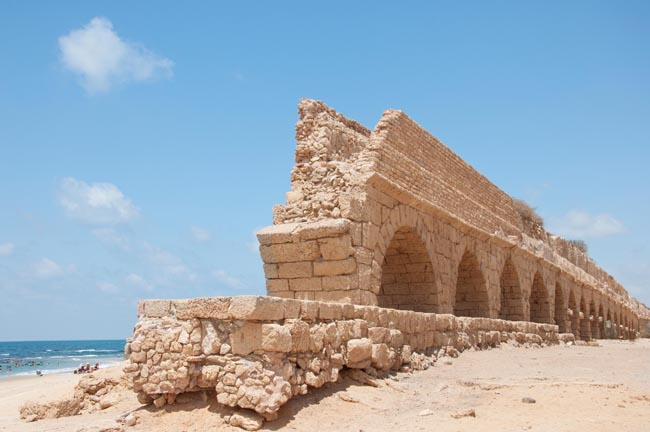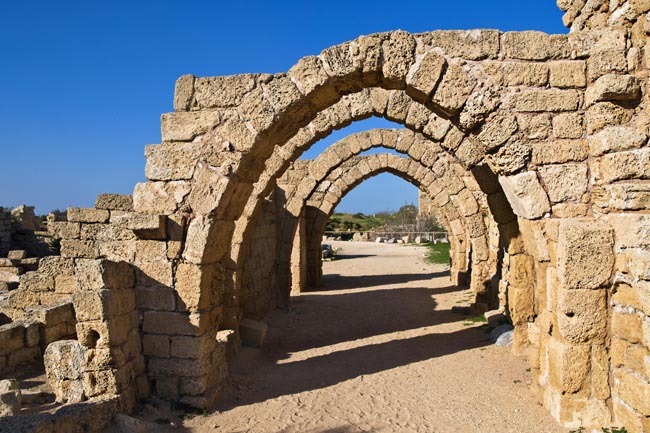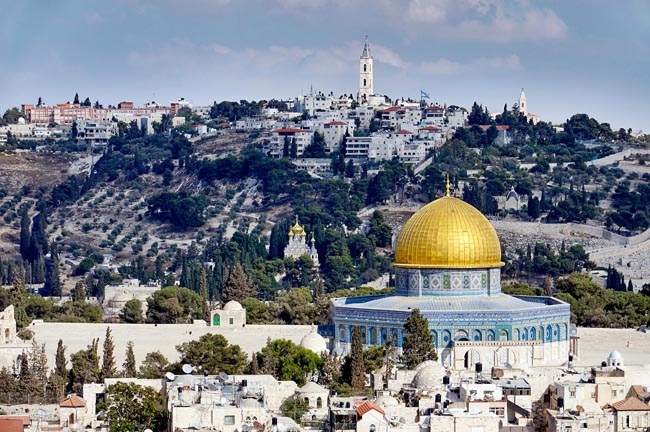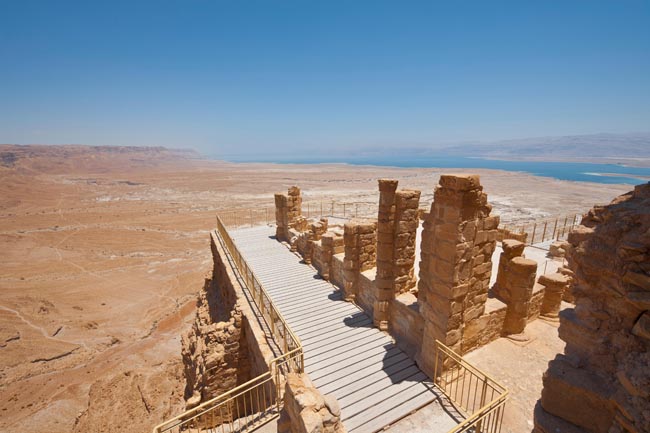This Egypt, Jordan and Israel tour is an exciting addition to our Middle Eastern roster of multi-country programs.
Previously, our only tour including Egypt, Jordan & Israel (JO9) was a big 29-day odyssey - an amazing trip for sure - but those with less time can still hit the big "must-sees" on this very tidy and efficient 17-day journey-of-a-lifetime.
Prices below are per person, twin-sharing costs in US Dollars (USD). Pricing does not include airfare to/from the tour and any applicable taxes. For single supplement rates and taxes (if any), please refer to below Prices & Dates table. For general information on flights to/from the tour, click here.
Select a date below to reserve your spot:
The above prices are subject to an additional $138 for taxes/fees levied on flights that occur as part of the tour. The internal airfares ARE included (any exceptions are listed in red below), but we list the taxes separately on your invoice as they are beyond our control and can change at any time.
Optional Single Supplement: $1200 USD (number of singles limited).
This tour may require a mandatory single supplement charge of $600 if you join our share program and we are unable to pair you.
Download Itinerary
Day 1 Arrive in Cairo
Today we arrive in Cairo.
Al-Qahira, literally "The Vanquisher" or "The Conqueror", is the capital of Egypt and the second largest city in the Muslim World, the Arab world and Africa and the 17th largest metropolitan area in the world. Nicknamed "The City of a Thousand Minarets" for its preponderance of Islamic architecture, Cairo has long been a centre of the region's political and cultural life.
Overnight in Cairo.
Included Meal(s): Dinner
Day 2 Cairo: Great Pyramids & the Sphinx - Grand Egyptian Museum
This morning we kick off our comprehensive sightseeing program with some of the most iconic of Egyptian monuments: The Great Pyramids and the Sphinx.
Impressive in their grandeur, the pyramids are estimated to have been constructed over a period of 20 years using more than 100,000 labourers each year. The Great Pyramid of Cheops, constructed from over two million stone blocks, is 135m (443 feet) high! You may enter one of the pyramids through a long, narrow passageway and explore the deep inner chambers (OPTIONAL - extra fee applicable).
Later we visit the Sphinx. This feline-human was named by the Greeks because it resembled the mythical winged monster with a woman's head and lion's body. Legend has it that this "Sphinx" proposed a riddle to the Thebans and killed all who could not guess the correct answer! The Sphinx was carved from one solid piece of limestone and measures 50m (164 feet) in length and 22m (72 feet) in height.
We then continue to the Great Egyptian Museum (GEM), where we can break for lunch at your choice of one of several on-site restaurants/cafes.*
After our break, our visit of the museum begins with a 45-minute guided tour, with a "sneak peek" into this vast facility prior to the official opening of all of the galleries. As part of our tour, we will also learn about the history of the museum itself, including answers to the inevitable question: “why has it taken 20 years to build?” We will also learn of how the inspiration of ancient Egypt is reflected in the museum’s design and the various components that make up the museum.
We’ll also receive an explanation of one of the main themes that repeats throughout GEM -- “Kingship and Eternity” -- and witness how this is reflected in the monuments accessible to us on today’s visit, namely: The Hanging Obelisk, the Colossal Statue of King Ramesses II, the ten Statues of King Senusret I (distance view), the Grand Staircase (distance view), double statues of Ptolemaic King and Queen, the Victory Column of King Merenptah, and the statue of the god Hapy, and the Statue of King Ramesses II.
Our visit will culminate with the ground-breaking "Tutankhamun - The Immersive Exhibition," which takes us on a mythical journey to the mesmerizing world of Ancient Egypt. Through state-of-the-art digital projections, you will have the unparalleled opportunity to step into the astonishing life of the legendary Golden King via an awe-inspiring audiovisual adventure that spans an astonishing 3,400 years of history.
After our visit we return to our hotel for dinner and overnight.
* PLEASE NOTE that the above day description refers specifically to our how time in Cairo will be spent for our tours that occur in February 2024. After this time, as conditions warrant, this day will be adjusted to reflect our plans from Fall/Winter of 2024/25, when the GEM is expected to be fully-open to visitors.
Overnight in Cairo.
Included Meal(s): Breakfast and Dinner
Day 3 Cairo: Archaeological Museum & Islamic Cairo
This morning we visit the famous Museum of Egyptian Antiquities,* where enjoy a guided tour of some of Egypt's most beloved treasures. Among the 100,000 pieces housed on the museum's two floors is the famous exhibit of Tutankhamun whose tomb was discovered by Howard Carter in 1922. The tomb and treasures of this young Pharaoh, modest by Pharaonic Egyptian standards, is perhaps the best preserved of the discovered tombs. We also see archaeological relics from the Old Kingdom, Middle Kingdom, New Kingdom and Greco-Roman periods. We also allow some time for you to explore the treasures on your own.
We then proceed to the Citadel, begun by Saladin in the 12th century. Today the Citadel's buildings are mainly from the Ottoman period, and are truly grand. From the Citadel, actually a complex of three mosques and four museums, we enjoy an amazing view of Cairo spread beneath the hilltop. Here we will see the fabulous Mosque of Mohammed Ali, also known as the "Alabaster Mosque."
* Please note that the above description is likely to be accurate for our tours scheduled for early 2024, when it is expected that the King Tut exhibition will still be housed at this site (rather than at the GEM). It remains unclear as to exactly what exhibits will be moved to GEM and when, but we expect that this museum will continue to function even after GEM is fully opened. Once this situation becomes clearer we will update this day's description.
Overnight in Cairo.
Included Meal(s): Breakfast and Dinner
Day 4 Cairo - Fly to Abu Simbel & Aswan
Early this morning we fly to Abu Simbel (with a stop in Aswan)* and the imposing rock temples of Rameses II and his queen, Nefertari.
We have a guided tour of this site, including the interior of the colossal temples. The Temple of Rameses II, with its immense statues of the Pharaoh seated on his throne, is one of the classic images of the power of the Pharaohs. Inside the temple you will see well-preserved wall decorations and several murals. There is a wonderful relief of Rameses presenting captives to various gods, including himself! We also gain insight into the reconstruction process by visiting the interior of the artificial mountain.
We then fly to Aswan and check in to our hotel. Depending on timing, your Tour Leader may suggest accomplishing some of our Aswan area sightseeing this afternoon.
* Occasionally due to availability problems or flight cancellations, we may accomplish the journey to/from Abu Simbel by road/bus.
Overnight in Aswan.
Included Meal(s): Breakfast and Dinner
Day 5 Aswan: St. Simeon Monastery & Felucca Sail Adventure
This morning we will take a private boat across the River Nile to the west bank. From here we travel by camel across the sandy desert to the Christian Monastery of St Simeon. Before we begin this easy trek our Tour Leader and camel trainer will teach you the technique of riding a camel. This is a journey that can be undertaken by anyone at any age (one rider per camel). Our trek is about 45 minutes to the monastery, and then 15 minutes back to the riverbank. Those who prefer not to ride can travel by open truck to the monastery and meet up with the group there.
Dating from the 6th century, and in use until the 13th century, the Monastery of St Simeon is one of the best-preserved Christian sites in Egypt. Inside we will see the chapel, living quarters, kitchen and dining areas, wine press, bake area and storerooms. On our tour we will also see the remains of some Coptic frescoes -- depictions of Christ and saints as well as many geometric patterns.
We then return to the banks of the Nile and re-board our boat and ride among the islands dotting the Nile. Up the hill, above the river, is the Mausoleum of the Aga Khan, spiritual leader of the Ismailis, a Shi'ite sect based principally in India but with followers around the world. The tomb is an elegant pink granite structure of late 1950 origin.
The main island in the middle of the Nile is called Elephantine Island because many of the rocks look like elephants bathing in the Nile. On the west side of the river is the beautiful Kitchener's Island, where we will have time to stroll through the rich botanical gardens.
Later this afternoon we have a leisurely sail on a felucca, a traditional sailing vessel used for centuries for carrying goods and passengers along the Nile.
Later this afternoon we will attend the Sound & Light Show at Philae Temple. The temple is situated on an island, and so we enjoy a short boat journey to get to the site. It is a good idea to have a small flashlight with you.
Overnight in Aswan.
Included Meal(s): Breakfast and Dinner
Day 6 Aswan to Luxor via Kom Ombo, Edfu & Esna
This morning we say farewell to Aswan and travel by road to the Temple of Kom Ombo. In ancient times, Kom Ombo was strategically important as a trading town on the caravan route from Nubia to Cairo. Kom Ombo, actually two temples in one, is dedicated dually to Haroeris (Horus) and Sobek, respectively the god of the sky and the crocodile-headed god. Here we are able to see the remains of a mummified crocodile. Crocodiles no longer exist in the Egyptian part of the River Nile, but in Pharaonic times they lived here in great numbers and were worshipped as gods!
From Kom Ombo we travel to the site of Edfu. As the largest and most completely preserved Pharaonic temple, albeit Greek-built, Edfu is dedicated to the god Horus. Construction of this temple began under Ptolemy III Euergetes I in 237 BC. We will allow time to explore this massive and impressive site, enclosed by walls and flanked by two large pylon gateways. Here we will also be able to see a Nilometer -- an ancient technique of measuring the Nile's water fluctuations and setting the level of taxes
Before arriving in Luxor we will make a short visit to the Temple Of Esna. This temple is located on the west bank of the Nile in the ancient city of Senat - called Latopolis by the Greeks. It was "the city of the fish" where the Nile perch fish was worshipped as divine. The temple, which was buried beneath debris for many centuries, is located in the center of the town close to the Nile. The temple is dedicated to the ram-headed god Khnum, the god of creation. Tuthmosis III laid the foundations of the Temple in the 18th Dynasty, but Ptolemaic and Roman Emperors completed it between 40 to 250 A.D., and their names are recorded all over the temple walls.
Overnight in Luxor.
Included Meal(s): Breakfast and Dinner
Day 7 Valley of the Kings & Queens
This morning we explore some of the most incredible sites in the country. We will visit the Valley of the Kings, where you will have the chance to explore three tombs of the ancient Pharaohs. We will then visit the nearby Valley of the Queens as well as the recently renovated mortuary temple of Queen Hatshepsut. Hatshepsut was the second pharaoh of the eighteenth dynasty of Ancient Egypt. Our tour also includes a visit to the huge Colossi of Memnon, which is all that remain of the mortuary temple of Amenhotep III.
Overnight in Luxor.
Included Meal(s): Breakfast and Dinner
Day 8 Luxor: Karnak/Luxor Temples
This morning we visit one of the most fantastic archaeological sites in the world: Karnak Temple.
Karnak was built, added to, dismantled, restored, enlarged and decorated during its colourful history of over 1,500 years. At certain points in Egyptian history, this temple was the most important in all of Egypt. When we arrive at the temple you will be awed by the grandeur of the tremendous pylon gateway and the Avenue of 1,000 Sphinxes that originally ran all the way to the Nile and Luxor Temple!
We then proceed to Luxor Temple. The temple was dedicated to the Theban Triad of Amun, Mut, and Chons and was built during the New Kingdom, the focus of the annual Opet Festival, in which a cult statue of Amun was paraded down the Nile from nearby Karnak Temple to stay there for a while, with his consort Mut, in a celebration of fertility. Luxor temple is considered one of the largest ancient Egyptian temple complexes situated on the eastern bank of the
river Nile. At the entrance is a huge tower built by King Ramses II.
Overnight in Luxor.
Included Meal(s): Breakfast and Dinner
Day 9 Luxor, Egypt - Amman, Jordan
Today we fly to Amman, Jordan.
Amman, the modern and ancient capital of Jordan, is one of the oldest continuously inhabited cities in the world, where the city's modern buildings blend with the remnants of ancient civilizations.
Overnight in Amman.
Included Meal(s): Breakfast and Dinner
Day 10 Amman: Jerash & Amman City Tour
Today we have a look at modern central Amman, visiting the Archaeological Museum, and the not-so-modern Roman Amphitheatre and the ruins of the Temple of Hercules.
We then leave Amman by bus for a tour of the extensive Roman site of Jerash. In the 1st and 2nd centuries AD, Jerash was a wealthy city and is today considered one of the most important and best preserved of all Roman sites. We visit the famous elliptical forum, the beautiful amphitheatre with its superb natural acoustics, and the site of the huge Temple of Artemis.
We will stop for our evening meal en route back to our hotel. This allows us to use our bus transport for this purpose and make for an early-ish arrival back to to the hotel after a full day.
Overnight in Amman.
Included Meal(s): Breakfast and Dinner
Day 11 Amman - Madaba - Mt Nebo - Shobak - Petra
This morning we travel to Madaba, a small town famous for its magnificent mosaic floors. A unique mosaic covers the floor of St. George's church and consists of a huge map of the Holy Land as it appeared in the 6th century AD.
Driving to the edge of the Jordan Valley we reach Mount Nebo from where Moses and the Children of Israel first saw the Promised Land. On a clear day you can look down to see the Dead Sea and the River Jordan. On the other side of the valley is the city of Jerusalem. Here we see a huge mosaic of hunting scenes covers the floor of a ruined Byzantine church.
We leave Mt Nebo and travel south via the King's Highway. Along this route, castles and towns were positioned a one day's travel distance apart. Later we visit Shobak Castle, built by the Crusaders in 1115 and sacked by Muslim forces under Saladin in 1189. We finish our full day at Petra.
Overnight in Petra.
Included Meal(s): Breakfast and Dinner
Day 12 Petra: Site Tour
Petra was the capital of the Nabataean Kingdom from the fourth century BC to the 2nd century AD. From the 12th century until its rediscovery in 1812, Petra was lost to the world -- a closely guarded secret of the local tribes. Today the 'rose red city half as old as time' is probably the most impressive archaeological site in the Middle East, rivaling the temples and pyramids of Egypt in grandeur.
This morning, on our way into the hidden valley of Petra, we will see the Obelisk Tomb and the irrigation system that carried water from a dam throughout the desert city. Access to the monuments of Petra is through a narrow gorge in the towering rocks called the 'Siq'. As we emerge from the 'Siq' you stand in awe in front of the 'Treasury' (El Kazneh), a graceful structure carved from the living rock. After pausing to admire the elegant columns and carvings we carry on into the valley where elaborate tombs are carved into the multi-coloured walls. Everywhere the sandstone swirls and twists in shades of red, orange, yellow, pink and white. Next we will see the Roman amphitheatre, carved directly out of the mountain, with space for over 3,000 spectators.
Further on in the main valley of Petra, are the Royal Tombs including the Palace Tomb and the Silk Tomb. We visit the temple of the Nabataeans' main god, Dushara, and we also see the 'Temple of the Winged Lion'. Our formal guided tour of the site terminates with a visit to the Petra Nabataean Museum.
At this point, you may explore further on your own, or return to our hotel to relax and / or shop. You may also take a strenuous walk up a narrow pass to see the magnificent 'Monastery' building, El Deir. The views of Petra and the surrounding area are expansive. The walk is steep and involves approximately 750 steps carved into the rock and will take APPROXIMATELY one hour up (30 minutes down).
NOTE: Access to Petra is by means of footpath only. The main sites occur near ground that is level and well-worn, though the overall site is huge. Our pace is leisurely with frequent breaks; however, to fully experience Petra you must be prepared for a considerable amount of walking and little shade.
Overnight at Petra.
Included Meal(s): Breakfast and Dinner
Day 13 Petra, Jordan - Masada, Israel - Jerusalem
This morning we travel along the Dead Sea Highway (please note that this highway has been damaged by flooding and it is unclear when it will re-open, so this means that we may not see the Dead Sea until we reach Israel). We continue to Allenby where we cross the River Jordan/border into Israel.
Once across the border we'll divert to the incredible site of Masada. This great flat-topped mountain and natural fortress was once held by a small band of Jewish zealots for three years despite the force of Roman armies. On this site 1,000 people committed mass suicide rather than be enslaved. Flavirus Josephus said, "Who decided a long time ago, brave soldiers that we are, not to be slaves of the Romans or of any person other than God; for he alone is the true and just master of men." We enjoy an introductory video before proceeding to the top of the mountain by cable car. After our formal guided tour, you will have time for some independent exploration.
From Masada we travel northward to the Ein Gedi Nature Reserve. After a short walk we reach Wadi David (David's Spring), a waterfall hidden in an oasis of luxuriant green vegetation that hangs clustered in a canyon wall.
We continue our journey toward Jerusalem. On the northwest shore of the Dead Sea we encounter the settlement of Qumran where we have a stop for lunch (today we include lunch instead of dinner). In 1947 it was here that two shepherd boys made one of the most significant discovery in religious history, the Dead Sea Scrolls (written texts of the Old Testament) hidden in the caves. The people who wrote them are believed to have been the Essenes who lived here until AD 68.
Later in the day we arrive in Jerusalem, the City of David.
Overnight in Jerusalem (dinner on your own this evening).
Included Meal(s): Breakfast and Lunch
Day 14 Jerusalem: City Tour
Old and new merge seamlessly in Jerusalem. You may hear the Muslim call to prayer competing with the clanging of bells from Christian churches and the prayers of Jews praying before the Western Wall. Everywhere you turn you'll see reminders of the three religions -- Islam, Judaism and Christianity -- that have shaped this part of the world.
We have a morning visit to the Temple Mount, one of the glories of Islamic Jerusalem, where you will view the Dome of the Rock. We then enter through the Jewish Quarter to witness the Herodian Mansions, a lavish palace in antiquity and built formerly of white marble, followed by a visit to the most important site in Judaism, the Western Wall.
Our tour also takes us by way of the Knesset, Israel's parliament, and the President's House.
Overnight in Jerusalem.
Included Meal(s): Breakfast and Dinner
Day 15 Jerusalem & Bethlehem - Tel Aviv
This morning we depart for Bethlehem,* where we visit the Church of the Nativity, the birthplace of Jesus. Built like a citadel over the cave where it is believed Jesus was born, the original 4th century church commissioned by Constantine was altered in AD 530 by Emperor Justinian. It was later captured by the Crusaders and then came under the jurisdiction of Saladin and then the Mamluks.
Back in Jerusalem, we will see the Old City from the vantage point of the Mount of Olives and then enter the old city and visit the Christian sites. Following the last steps of Christ along Via Dolorosa, we approach Calvary and the most sacred site in Christendom, the Church of the Holy Sepulcher. Most Christians venerate this site as the location of the death, burial and resurrection of Christ.
We also visit the Garden of Gethsemane, a strikingly beautiful garden, located at the foot of the Mount of Olives. A visit here is a highlight of any trip to Jerusalem’s Christian sites; steeped in biblical history, the Garden of Gethsemane is most famously known as the place where Jesus went with his disciples to pray after the Last Supper on the eve of his crucifixion.
* NOTE: Due to security concerns/procedures that change frequently, Bethlehem exists in our program on a provisional and tentative basis only. In the event that a visit to the West Bank is not appropriate by departure time, we may remain in Jerusalem and expand our sightseeing there with a visit to the Israel Museum to see the Dead Sea scrolls and a model of the second temple.
We finish our day in Tel Aviv where we overnight.
Included Meal(s): Breakfast and Dinner
Day 16 Tel Aviv: City Touring
Today we have a tour of vibrant Tel Aviv, a modern city with a unique mix of European and Middle Eastern influences. We'll visit the Ayalon Institute, now a museum, and once a secret ammunition factory disguised as part of a kibbutz to fool the British back in the 1940s. Jewish people used the factory in their efforts to fight for the independent state of Israel. Organizers went to extreme measures to build and sustain this secret factory within the kibbutz. Between 1945 and 1948, the Ayalon Institute produced more than 2 million 9mm bullets.
We see the Independence Hall (possibly closed for renovations) and the colourful Carmel Market before we head off to the Old Port City of Jaffa (Yaffo), an ancient and beautiful city located in the south of Tel-Aviv.
Jaffa claims over 4,000 years of history and is the place where the prophet Jonas was swallowed by the whale, and the Rock of Andromeda can be seen jutting from the water. The Turks, Napoleon and the British also established their rule of the region through control of this city. We have a walking tour of the old city of Jaffa, a major attraction with winding alleys full of cafes, restaurants and art galleries.
You will have free time for independent exploration before our farewell dinner.
Overnight in Tel Aviv.
Included Meal(s): Breakfast and Dinner
Day 17 Departure
Departure from Tel Aviv.
BON VOYAGE!!
Included Meal(s): Breakfast
Inclusions
Breakfast and dinner daily. All transport (including internal flights), accommodation, sightseeing and entrance fees for sites noted as 'visited' in the detailed itinerary. Gratuities for drivers, restaurant staff, porters, local guides. Airport transfers for land & air customers and for early arriving/late departing land & air customers who book their extra hotel nights through us.
Exclusions
International airfare to/from the tour. Tour Leader gratuities, most lunches, drinks, personal items (phone, laundry, etc), international (if applicable) air taxes, and any excursions referenced as 'optional'. Airport transfers for Land Only customers. Optional trip cancellation insurance. Our post-reservation trip notes offer further guidance on shopping, included meals, visas, and locally-paid departure taxes.
Seasonality and Weather
This tour is offered in spring and fall when temperatures are the most pleasant. That said, once can still expect heat in some locales, especially in Upper Egypt, and especially during "shoulder" times, ie March/April & early October. At these times, your Tour Leader will do his/her best to structure our activities to take advantage of the more comfortable times of day to head out, which could mean some early starts and possibly a block of leisure time midday.
In Israel and some parts of Jordan, spring is green season in some locations, while fall brings the harvest of dates, melons, grapes, and many other local crops. Showers are possible both times but the overall region is arid on average.
Transport and Travel Conditions
Local ground transport provided by private air-conditioned motor coach, 12-36 seats depending on ultimate group size. Internal flights via local air carriers.
Our rating "Level 2" on this tour refers to its ambitious nature, full days, and plenty of time spent on your feet. Some days involve some early starts as dictated by internal flights as well as some excursions, ie Alexandria & Abu Simbel, for which early departures are necessitated by distance and traffic. We also like to get to Abu Simbel in time for sunrise and before large crowds arrive. Many sites visited are LARGE; surfaces are uneven and sloped, and stairs will factor into our visits. Heat can also be a factor in some locations which can, over time, cause fatigue. This is not an 'easy' tour; if you are unsteady or slow on your feet, rely heavily on a cane or any other mobility aid, or tire easily, we regret that this tour would not be suitable.
Though baggage handling is available throughout, you must still be able to fully manage yourself and your things, especially at airports.
IF YOU'RE WONDERING why we don't offer a Nile cruise between Aswan and Luxor, we find that by travelling between these two points overland we are able to include more sites (ie Abydos & Dendara) in addition to Kom Ombo and Edfu, where we enjoy private sightseeing instead of having our group combined with other groups on the cruise program. Our independence also allows us to avoid peak periods and crowds at the times that cruise ships generally dock. We know that the notion of a Nile cruise has a special romantic appeal, but we (including our Tour Leaders) have always preferred this alternative. The ships spend most of their time tied up at the docks in Luxor and Aswan and the time actually sailing is rather limited and may occur at night due to the limitations of the transit lock system, which often gets backed up. As cruise programs tend to feature quite a lot of "down time," this option was rarely well-received by past travellers back in the day when we included it. We hope this clarifies!
Am I suitable for this tour? Please refer to our self-assessment form.
Accommodation
Hotels used on tour are well-located, air-conditioned, 3-4-star (maybe the odd 5-star) properties with en-suite bath/toilet. Single rooms are limited in number and are possibly smaller than twins. Porters are generally available (see 'Inclusions').
Click on the "Map & Hotels" tab on this page for more information.
Staff and Support
Tour Leader throughout, local drivers, local guides at various locations.
Group Size
Maximum 18 plus Tour Leader
Regions visited: Middle East
Countries visited: Egypt; Jordan and Israel
*The red tour trail on the map does not represent the actual travel path.
The following is a list of sample hotels at some locations included on this tour. The hotels shown here are meant to provide a general sense of the standard of hotel we usually aim for; they are not necessarily confirmed for your chosen departure.





Our spacious and comfortably furnished hotel rooms offer comfort at a high level. Indulge in culinary delights in our restaurants & bars.





Help yourself to the good life at Mövenpick Resort Aswan. From sunny pool days with the family to indulgent spa time, energizing workouts to immersive cultural experiences, we invite you to enjoy it during your stay in Aswan.













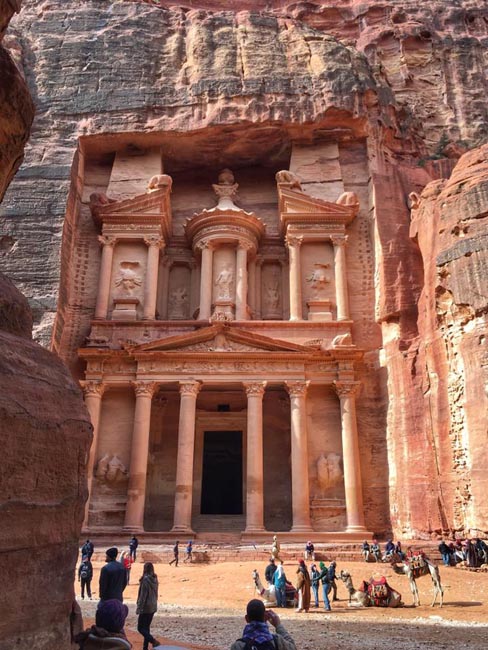
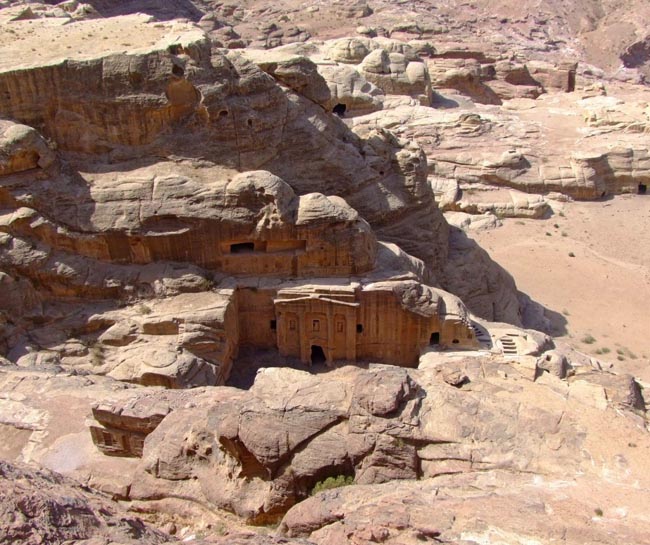
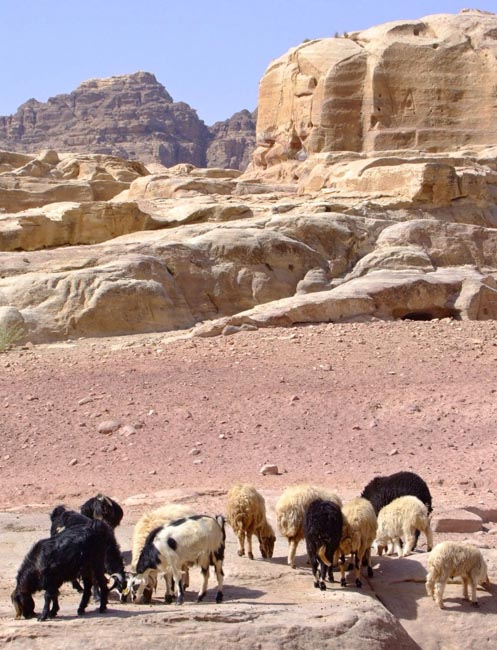
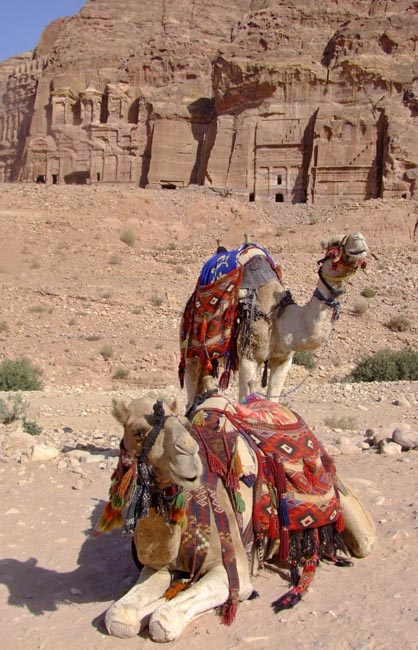
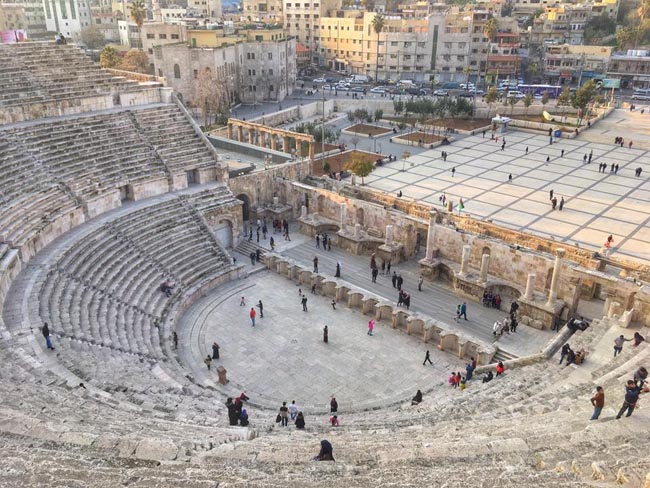




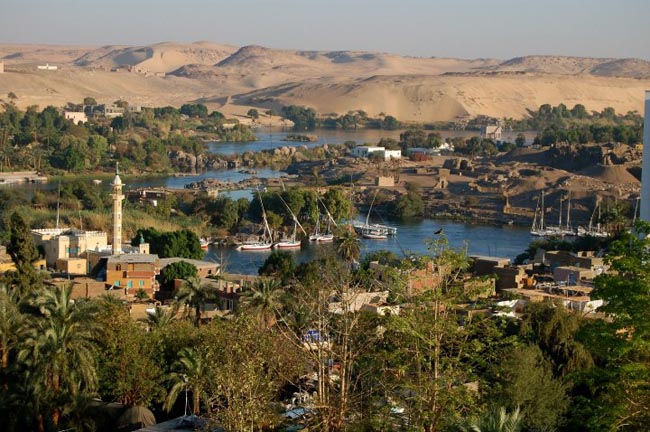
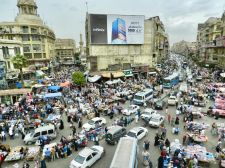
_modified.jpg)


